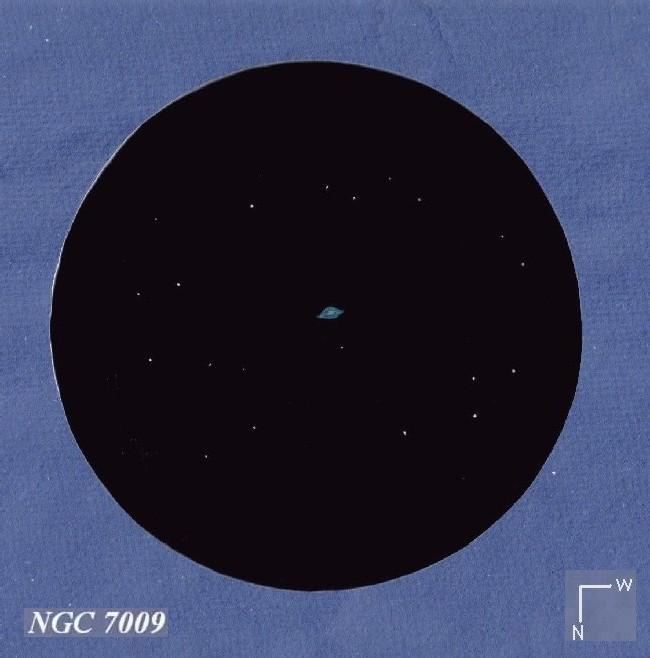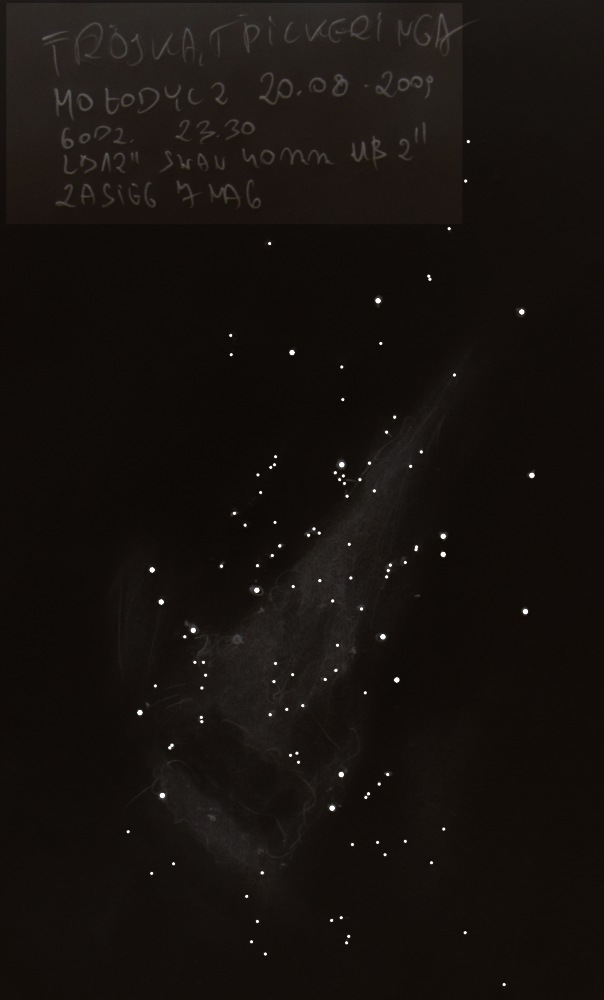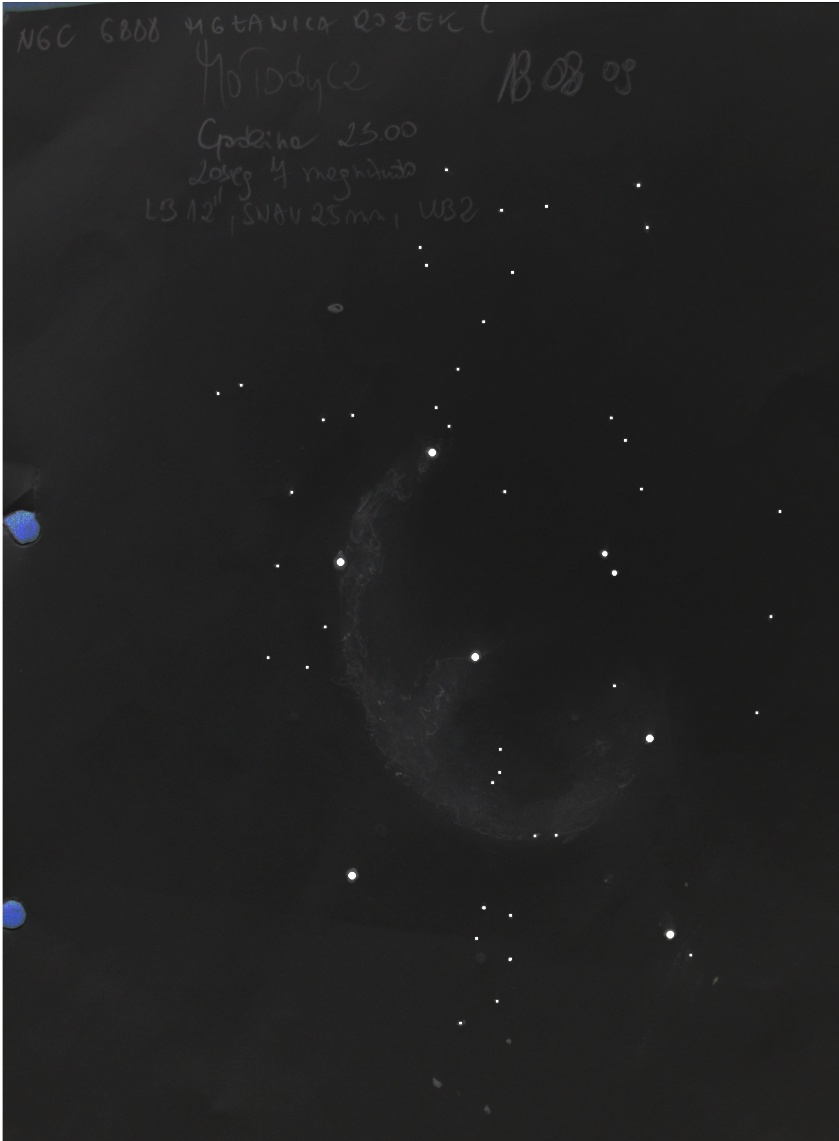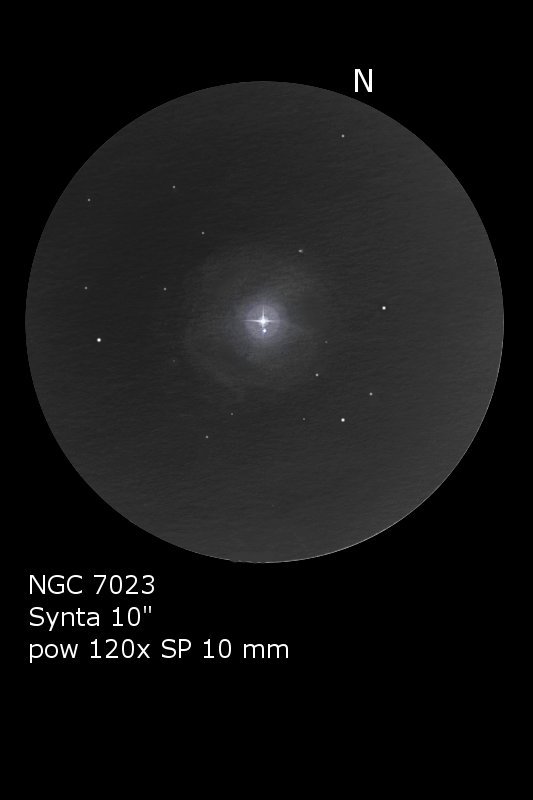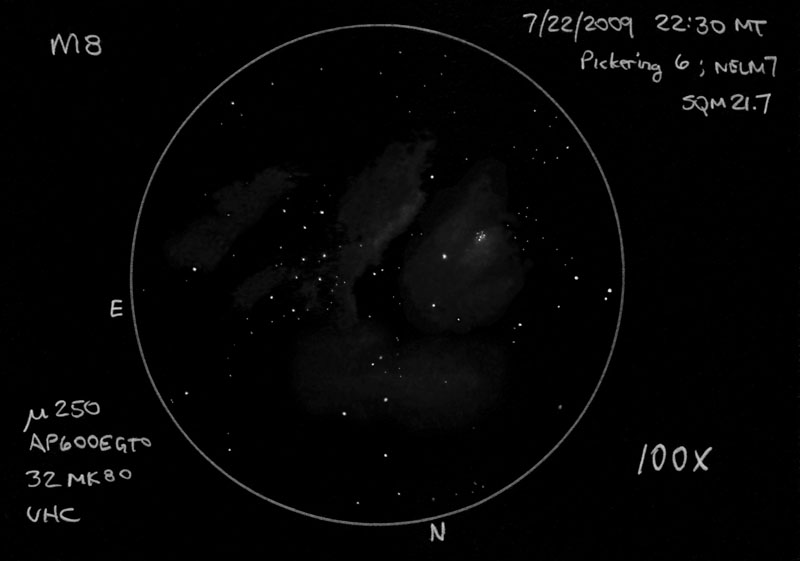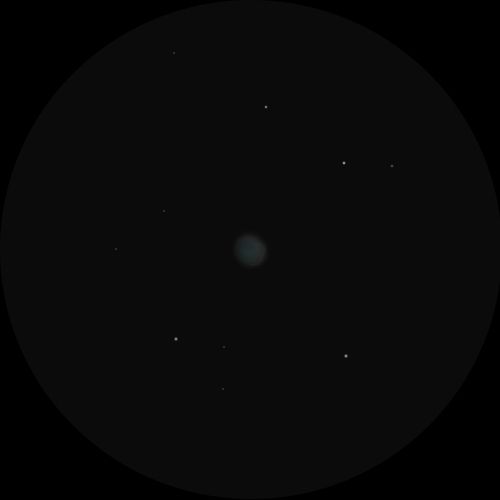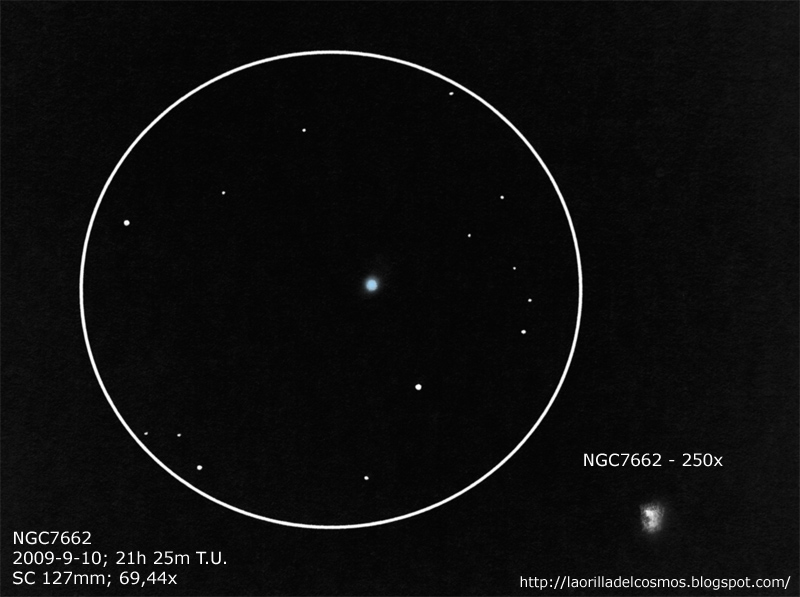
NGC 7662, The Blue Snowball, a planetary nebula in Andromeda
Sketch and Details by Oscar Ll. (Nickname: almach)
NGC7662 is one of my favorite planetary nebula for one simple reason: I can see a delicate blue color on it, something unusual in deep sky objects. The sketch was made with a HB2 pencil with a little help of a white snowball cotton… on white paper. After this, inverted, colored the planetary and modified some paremeters with Photoshop Elements.
For the main sketch I used 69x. With this magnification I can see clearly the color. With 250x (the theorical useful magnification limit of my telescope) I can see more detail of its structure, but I “loose” the planetary color.
For more details of my observation you can visit my blog.
NGC 7662 – The Blue Snowball (planetary nebula)
Date and Time: 2009-09-10, 21h 25m UT
Scope: Celestron Nexstar 5i, SC 5″ (127mm). 18mm (69x) and 5mm (250x) eyepieces
White paper, HB2 graphite pencil, and scanned and inverted with Photoshop
Seeing: 4/5 (5 the best)
Transparency: Some clouds. Moderate light pollution.
Location Constellation: Andromeda
Position: R.A. 23 h 26 min
Dec. +42° 33?
Thank you and best regards.
Oscar


